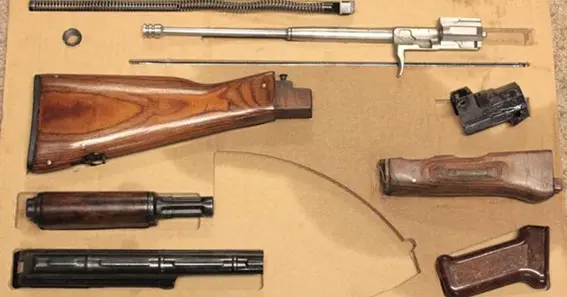If you’re researching the world of firearms collectibles, chances are you’ve come across AK-47 build kits. These kits contain parts that enthusiasts and collectors often seek for historical, restoration, or hobbyist purposes. While the AK-47 itself has a storied past as one of the most recognizable rifles in the world, build kits introduce unique questions of legality, safety, and authenticity.
In this blog, we’ll cover the essentials you need to know—without providing any instructions or encouragement on how to assemble a functioning rifle. It’s vital to always stay informed on the legalities in your jurisdiction, seek professional guidance, and handle all firearms-related matters responsibly.
The Allure and History of AK-47 Build Kits
-
Historic Appeal
- The AK-47 (originally designed by Mikhail Kalashnikov) has been produced and cloned in many countries. Some build kits come from demilitarized rifles with historical value, appealing to collectors who appreciate the rifle’s iconic global influence.
-
Parts and Components
- Typical kits may include barrels, stocks, bolt assemblies, and other metal parts stripped from surplus rifles. However, they often exclude or modify critical components (like the receiver) to comply with various regulations before being sold.
-
Varying Quality and Origins
- Kits can vary drastically in terms of condition and country of origin. Some come from well-preserved storage, while others are heavily worn surplus. Enthusiasts usually research the markings or manufacturer stamps for authenticity and historical significance.
-
Legal Factors
- Regulations differ depending on where you live. In many places, simply owning certain gun parts may be subject to strict laws. The receiver, in particular, is heavily regulated because it’s typically considered the “firearm” component under the law.
-
Collector vs. Builder Mindset
- Many individuals purchase these kits purely for collecting or historical preservation. Others may explore the potential of restoring or rebuilding a rifle—subject to legal requirements. Regardless of your purpose, it’s crucial to understand the rules that govern these kits.
Key Considerations (Important Disclaimer)
- Local Regulations: Firearm laws vary widely by country and even within regions or states. Some jurisdictions ban certain parts outright, while others require specialized licenses.
- Professional Guidance: Before handling any firearm parts, consult legal professionals or licensed firearms dealers to ensure you remain compliant.
- Safety & Compliance: If you’re unsure about the assembly, ownership, or legality of any firearm component, seek out certified experts for advice. The information here is for general knowledge and does not replace professional or legal guidance.
Maintenance and Preservation
-
Proper Storage
- Even as collectible parts, store components in a climate-controlled environment. Moisture can cause rust and degrade the metal over time.
-
Cleaning and Oiling
- Metal parts from surplus kits might arrive coated in cosmoline (a rust-preventative grease). Gently clean them with a suitable solvent and apply a thin layer of gun oil to prevent oxidation.
-
Inspection for Damage
- Surplus parts can show signs of wear or cracks. Check each part carefully—especially if it’s intended for display or restoration projects.
-
Documentation and Provenance
- If historical significance matters to you, keep records of your kit’s origin, manufacturer markings, and relevant paperwork to preserve its collectible value.
-
Consulting Experts
- Reputable gunsmiths or historical arms experts can verify authenticity and provide insights on caring for older components.
5 Frequently Asked Questions (FAQ)
-
Q: Are AK-47 build kits legal to own everywhere?
A: No. Legality depends heavily on local, state/provincial, and national laws. Some places have strict regulations or outright bans on specific firearm parts or kits. -
Q: Do these kits come with a functioning receiver?
A: In most cases, build kits do not include a fully functional receiver due to legal restrictions. The receiver is typically cut or otherwise rendered non-functional before sale. -
Q: Can I assemble a complete rifle from a kit without any special licensing?
A: This depends entirely on local laws. In many jurisdictions, manufacturing or completing a firearm may require special permits, serialization, or other steps. Always consult legal professionals. -
Q: Are AK-47 build kits a good investment for collectors?
A: It varies. Well-preserved kits from unique historical sources can hold or increase their value over time. Condition, rarity, and origin are major factors influencing collectibility. -
Q: Where can I find reliable information on AK-47 build kits?
A: Firearm forums, reputable firearms publications, and organizations that focus on historical weapons can offer insights. Always verify that any resource you use is credible and up-to-date with current laws.










